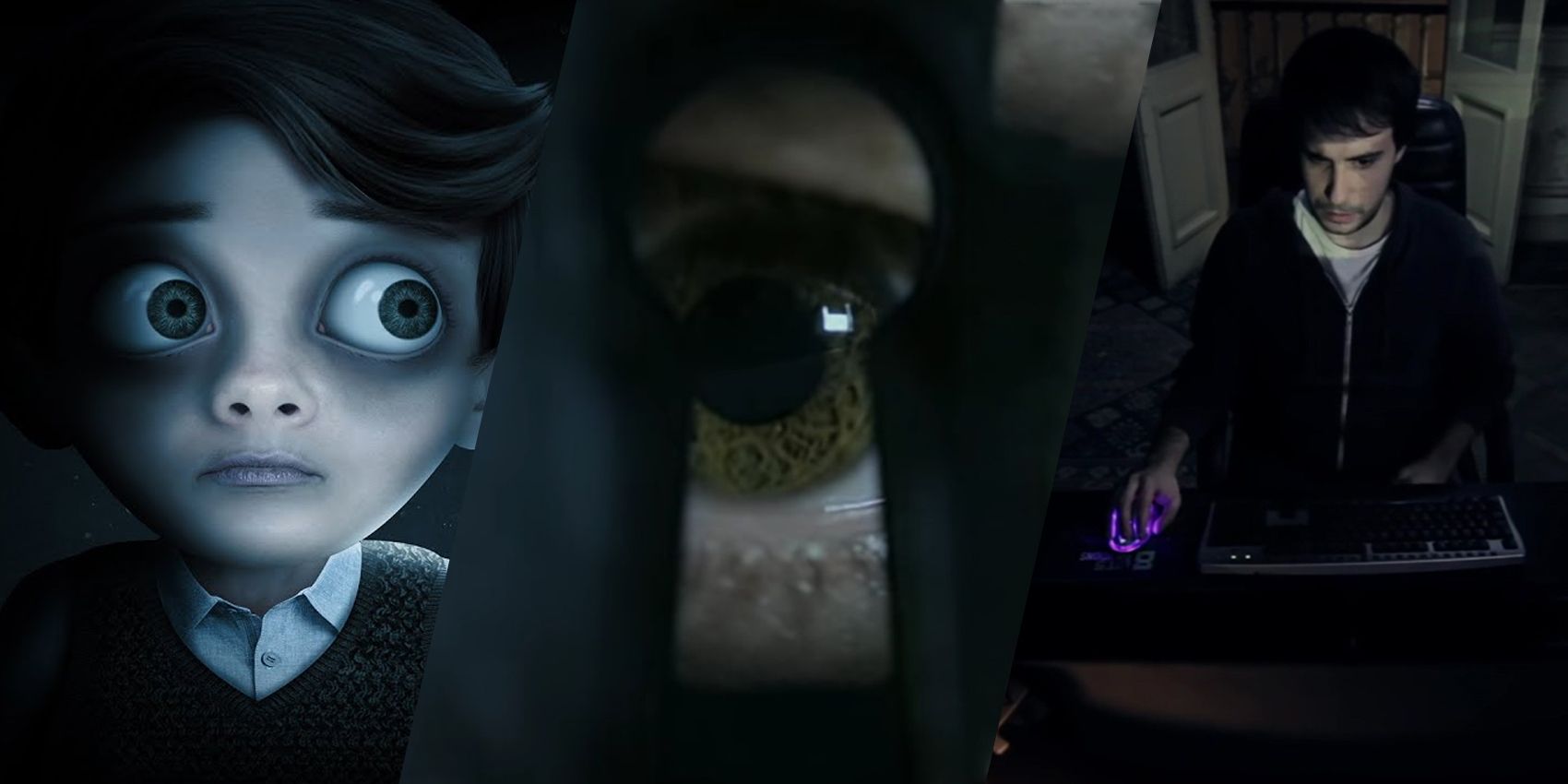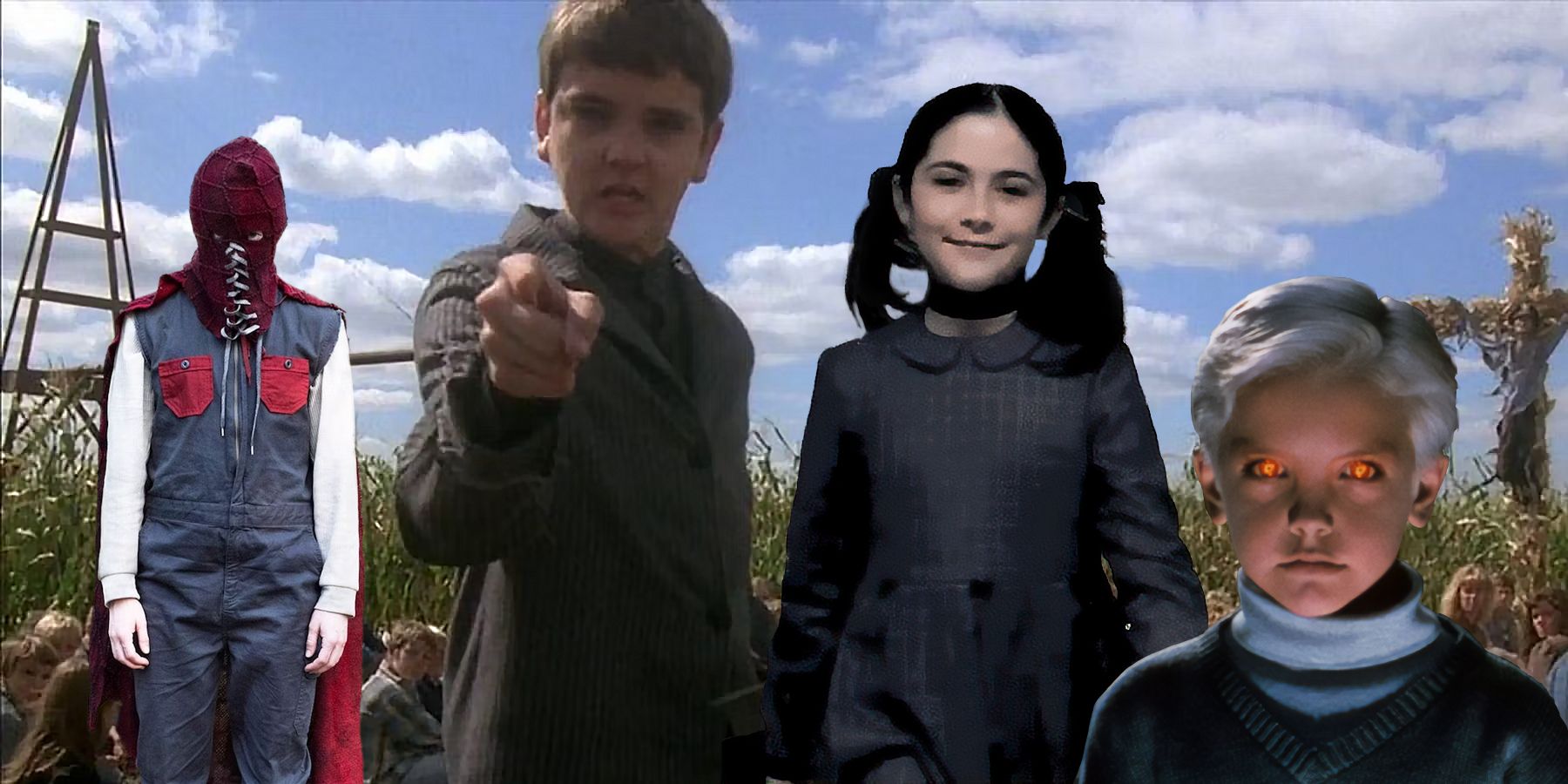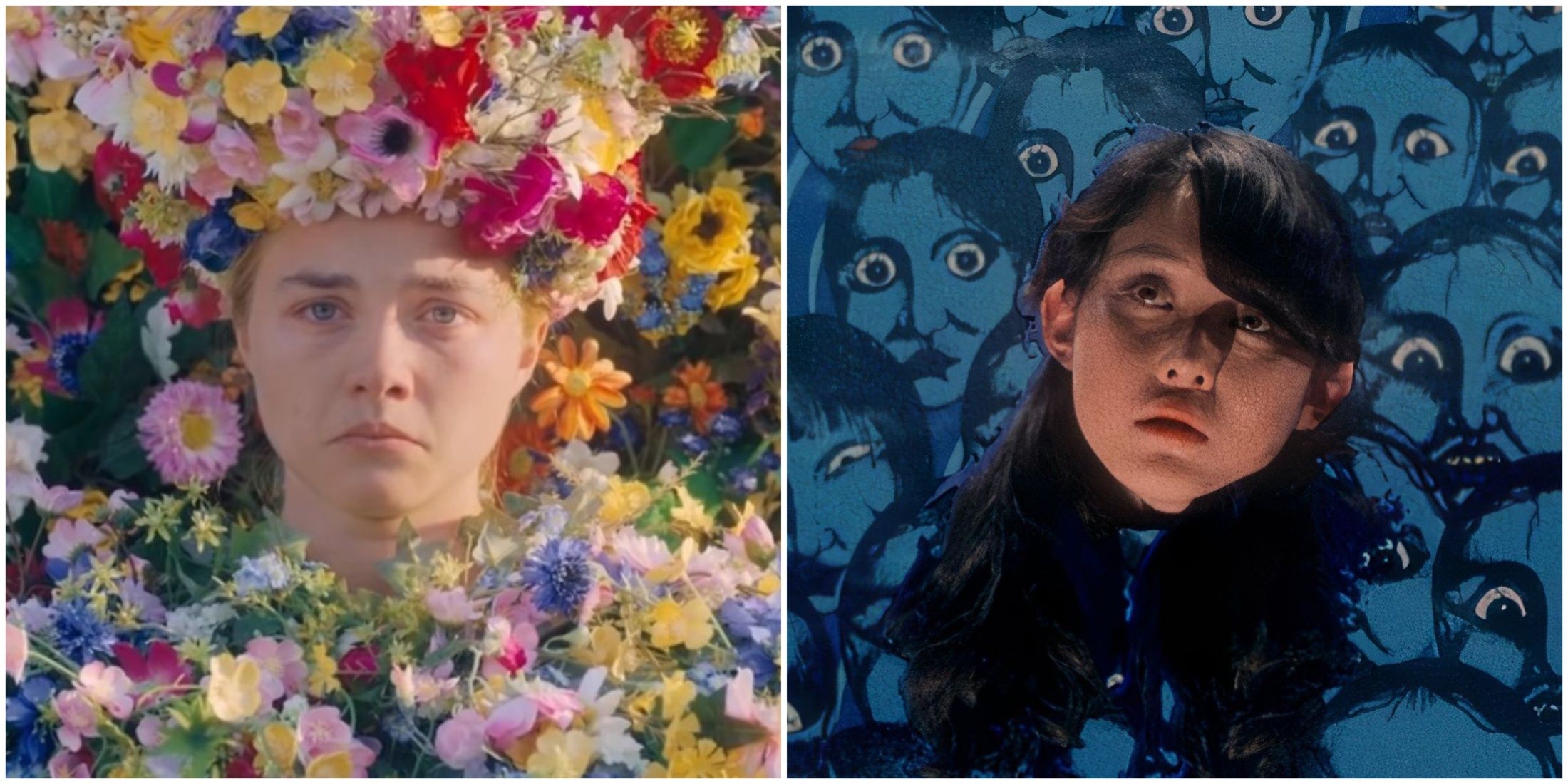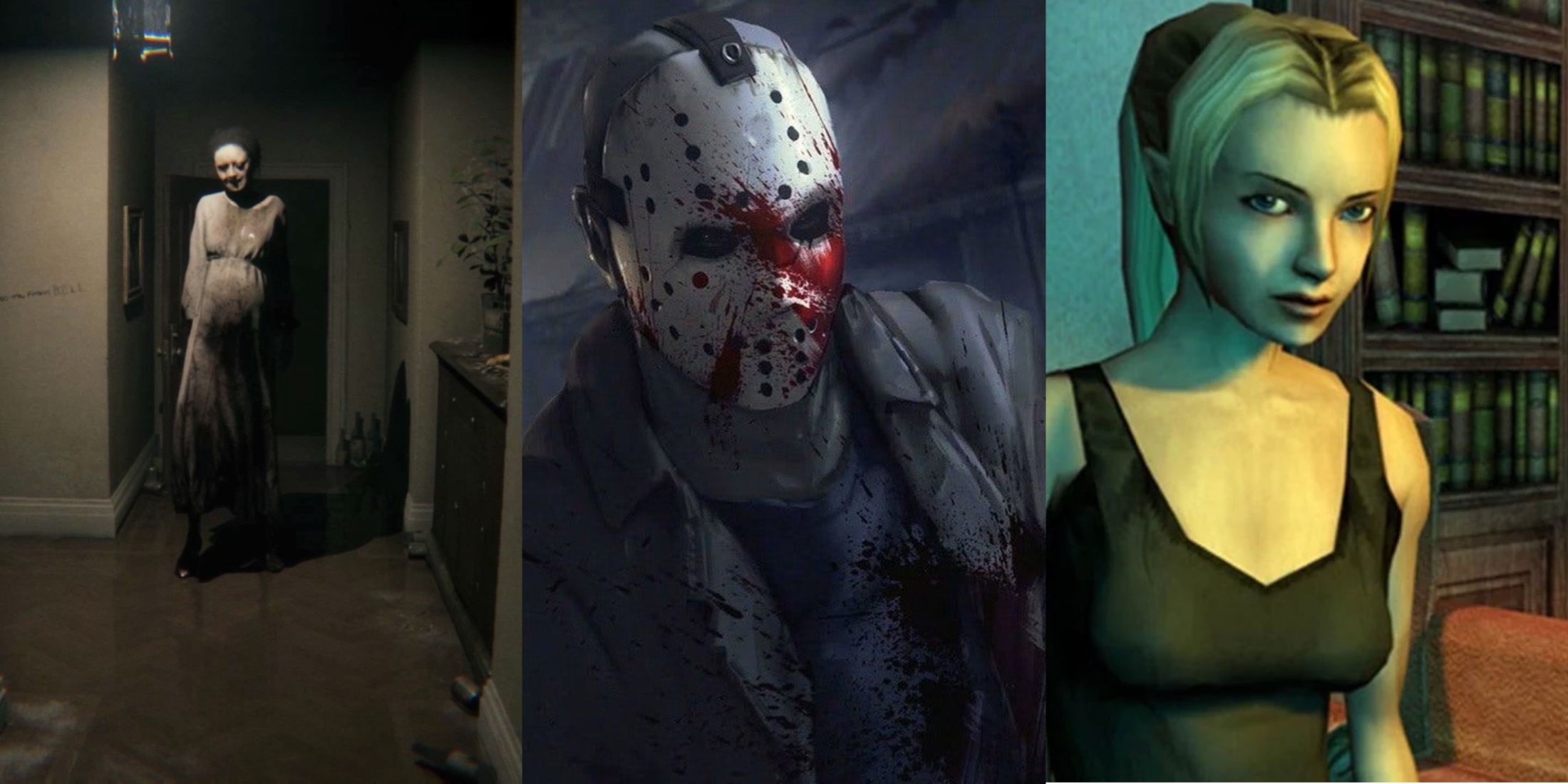Best Horror Games That Use A Camcorder, Ranked
Description
Summary
- Horror games using camcorders offer immersive experiences through limited viewpoints.
- The use of camcorders as tools of dread adds tension and unease to gameplay.
- Each game creatively incorporates the camcorder into the storyline, enhancing the horror experience within the narrative.
There’s something about watching horror unfold through a camcorder lens that makes everything worse in the best way possible. Maybe it’s the claustrophobia of a narrow field of view. Maybe it’s the DIY energy of it all, where every shaky frame and grainy zoom pulls players deeper into paranoia. Or maybe it’s the cold, inescapable fact that cameras don’t lie…and some things aren’t meant to be seen.
These horror games turn camcorders from simple tools into instruments of dread, each using their lens in clever, often skin-crawling ways. From cursed VHS tapes to digital night vision in the middle of nowhere, here are the best titles where filming is surviving.

Related
22 Horror Shorts That Are Scarier Than Most Movies
There have been some seriously chilling Horror Shorts created over the years. Here’s a look at some of the absolute best.
6
The Final Take
This Film Student’s Final Project Should’ve Been a Rom-Com
- Release Date: June 16, 2016
- Developer: HUSH Interactive
- Publisher: Forever Entertainment S. A.
- Platforms: Windows
The Final Take is a mix of found footage aesthetics and tank controls, combined with the eerie vibes of a late-night public service announcement. This indie horror title isn’t a household name, but it delivers a surprisingly effective blend of VHS-era atmosphere and analog horror tension.
The game’s presentation mimics footage captured on old surveillance cameras and handheld camcorders, complete with static fuzz, washed-out colors, and time stamps. Each level is from a different character’s point of view, and their recordings piece together a fractured narrative involving a ghostly nurse and a very cursed hospital. But here’s the catch: players don’t control the camera. Instead, they move characters as if walking through pre-recorded footage, locked into the lens’s perspective with no ability to look around freely. That limited viewpoint turns routine hallway strolls into unbearable treks of suspense.
It’s janky, and the AI isn’t exactly Xenomorph-tier, but there’s a certain charm in its commitment to aesthetic. The lo-fi visuals make it feel like a fever dream on magnetic tape — blurry, jittery, and way too close to something that should have stayed buried.
5
DreadOut
Digital Exorcism With A Side Of Fatal Photography
Imagine Fatal Frame, but with Southeast Asian ghosts and a teenage girl who fights them off using her smartphone. DreadOut, developed by Indonesian studio Digital Happiness, swaps the traditional camcorder for a phone camera, but the spirit is the same (pun intended). Players control Linda, a high school student trapped in an abandoned town filled with restless spirits drawn straight from Indonesian folklore. The phone’s camera becomes a tool for both navigation and survival. Supernatural entities are invisible to the naked eye, but aim that lens at the right angle and, bam — there’s a ghost. Some enemies can only be harmed if photographed, requiring players to frame them like cursed Instagram posts to stay alive.
What makes DreadOut stand out is its cultural specificity. Players aren’t dealing with generic horror tropes, but with pocong, kuntilanak, and other terrifying spirits rooted in regional myths. It makes the horror feel fresh, and often unpredictable, especially for players unfamiliar with the lore. As Linda snaps photos, she winces, stumbles, and reacts. It makes the danger feel a lot more personal than in most stoic survival horror leads.
4
Fatal Frame: Maiden of Black Water
Taking Pictures Of Ghosts Was A Lot More Fun When It Was Pokémon Snap
It’s poetic, using a camera to fight ghosts that only exist when seen. Fatal Frame: Maiden of Black Water sticks to the series’ tried-and-true formula of exorcising spirits by taking their photos, but this time, it’s with the Wii U GamePad acting as the in-game camera. That awkwardly immersive setup — where players physically tilt the controller to align the lens — feels a bit clunky now, but it was brilliant at the time.

Related
29 Terrifying Horror Movies About Evil Children
Evil children are one of the scariest tropes in horror movies. These eerie movies in particular will have viewers both shivering and cringing.
Set around the haunted Mount Hikami, the game follows three protagonists uncovering supernatural mysteries tied to ritual sacrifice, drowned priestesses, and the concept of Yomi (the Japanese underworld). Every hostile ghost encounter plays out like a fight, but instead of guns or knives, players snap photos to weaken spirits and eventually purge them. The closer the ghost, the more damage the shot deals — a mechanic that encourages horrifying proximity.
What sets this entry apart is its environmental storytelling. The ghosts encountered often echo their tragic pasts, and the water-soaked aesthetic adds an eerie weight to every step. This is a game where players walk slowly, not because they can’t move faster, but because they don’t want to find what’s waiting around the corner.
3
Outlast 2
What If Your Only Lifeline Was An Obsolete Sony Handycam?
There are two things players can always rely on in Outlast 2: religious trauma and AA batteries. And neither of them run out at a convenient time. Set in the desolate Arizona wilderness, this sequel ditches the asylum for a backwoods cult. Players step into the shoes of Blake Langermann, a cameraman searching for his missing wife after a helicopter crash. Once again, the camcorder is everything. It’s how players navigate pitch-black barns and mines using night vision, record key story moments, and monitor their own sanity.
The camera now includes a microphone, letting players hear footsteps or whispers through walls — a feature that’s as useful as it is horrifying. But what really turns the tension up is how often that battery dies. Being chased by heretics through cornfields is bad enough, but doing it blind because the camera blinked out? That’s a waking nightmare.
Outlast 2 pushes deeper into psychological horror, touching on everything from childhood trauma to religious fanaticism. It’s a lot, and not always subtle, but when paired with the camcorder’s voyeuristic framing, it feels disturbingly intimate, like watching someone else’s nightmare.
2
Blair Witch
This Forest Has Bad Reception And Worse Vibes
Blair Witch takes place in the Black Hills Forest in 1996, right after the events of the original film. Players control Ellis, a former cop searching for a missing boy, accompanied by his dog Bullet. And while Bullet is an emotional support MVP, the camcorder quickly becomes the real MVP-slash-mechanic as things spiral.

Related
10 Best Abstract Horror Movies
Fans of abstract stories are likely to enjoy these unnerving and thought-provoking horror movies.
The camera in Blair Witch does more than record — it’s a reality-bending tool. By watching certain tapes and rewinding or fast-forwarding them, players can actually alter the environment in real-time. See a locked door? Rewind the footage to a moment when it was open, and poof, it’s open in the player’s world too. It’s a brilliant use of metafictional design that ties into the game’s themes of memory, perception, and guilt.
The game also plays with psychological horror, PTSD, and shifting perspectives. Ellis’s past blurs with his present, and the camcorder often becomes the only thing grounding him — except when it starts showing things that shouldn’t exist. The forest twists itself around the lens, sometimes literally, and the constant threat of losing Bullet turns every decision into an anxious coin flip. While not perfect, Blair Witch does something rare: it takes the camcorder and makes it a narrative device, not just a flashlight substitute. The way it plays with time makes it feel like the forest is alive and watching back.
1
Outlast
The Gold Standard Of Running For Your Life With A Low Battery
If Outlast didn’t invent the camcorder-as-lifeline horror trope, it definitely cemented it in modern gaming. Set in the Mount Massive Asylum, a facility run by the Murkoff Corporation and filled with the kind of patients that make Freddy Krueger look subtle, Outlast is an exercise in powerlessness. Players control investigative journalist Miles Upshur, who only brings two things with him: a notebook and his trusty camcorder. The camcorder doesn’t just help players see in the dark — it becomes the lens through which they experience everything. Important story moments are only recorded if the player is actively filming them, which creates a terrible choice: keep filming and risk dying, or hide and miss something crucial.
The game thrives on its pacing. The Walrider, Chris Walker, the Twins — every monster encounter is timed to make the player feel like they barely escaped. The asylum itself is a character, too. Blood-slicked halls, flickering lights, rooms that look like someone tried to exorcise them with a chainsaw — it’s a place built to be observed, not survived. There’s a reason Outlast became the blueprint for modern first-person horror. It made something as mundane as running out of AA batteries feel like a death sentence. And it showed just how terrifying it is to stare into the dark, knowing it’s staring back.

More
7 Great Horror Games You Can’t Buy Anymore
These great horror games made a splash at release, but due to being stranded on outdated systems or simply lost to time, they’re no longer available.




